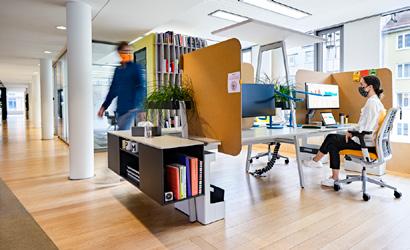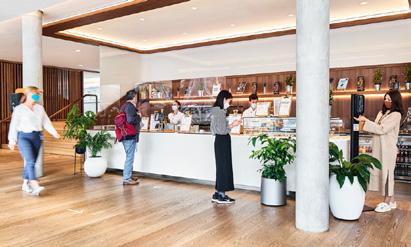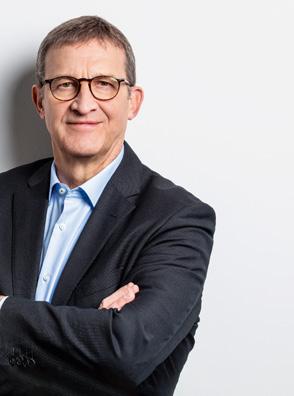
2 minute read
Steelcase
Steelcase
Work Better: Go back to a better experience
Advertisement
People want to come back to the office. But they want a work experience that is fundamentally better.
What Workers Want
5Safety Belonging Productivity Comfort Control
Macro Shifts
Safety Productivity Inspiration Flexibility
The pandemic has permanently reshaped our lives and it will lead to a great reset in the workplace. The things employees liked about their office life before the crisis have become even more important, while the things that frustrated them will become an even bigger barrier if not addressed.
To understand the impact the pandemic has had on what people want, Steelcase conducted research in 10 countries and engaged over 32,000 people in multiple studies.
Synthesizing these studies uncovered
five overarching things people want
that will drive macro shifts in the overall work experience and lead to new ways of planning and designing offices.
• Safety
(indoor air quality, adherence to safety protocols, general facility cleanliness)
• Belonging (connect with colleagues, reconnect to the organization and shared purpose)
• Productivity
(to be of value and feel their work has purpose, access to the tools and technology they need and to be able to focus
• Comfort (changing postures throughout the day)
• Control
(control over the level of privacy and the flexibility to move things around to best suit their work.)
New Design Principles
Me and Us Fixed to Fluid
I/U Open/Enclosed Braiding Digital + Physical Experiences
People’s expectations are forever changed by the COVID-19 pandemic. And organizations have an opportunity to leverage this moment to do a reset in their offices, buildings and campuses. The pause offers a chance to think ahead to the fundamental ways work and workplaces will be transformed.
Design for Safety (or Prevention):
Understanding how pathogens move through an environment will help companies develop new multi-pronged strategies to help mitigate disease transmission and augment behavioral changes such as wearing masks and distancing.
Design for Productivity:
Some headlines suggest the workplace should focus on collaboration almost exclusively, which discounts the realities of how work gets done. Activities are interwoven, between group and individual work, to solve complex problems and to innovate. Both solo and group work need harder working physical and digital environments.
Design to Inspire:
Inspiration comes from feeling a sense of belonging and purpose. The built environment can become an infrastructure for people to build social capital. It needs to be designed to intentionally foster meaningful planned and serendipitous interactions.
Design for Flexibility:
Historically designed for permanence, buildings and offices have been dominated by fixed architecture, power and furnishings. Going forward, organizations want places that can easily adapt to changing circumstances. As leading organizations explore flexible work policies, allowing people to choose their hours and locations, the built environment will need to be flexible as well to adapt easily to the changes in where and how people work. Different design approaches will be required to create spaces that support the new
ways people want to work
and the things organizations need to compete effectively. Before the pandemic, designers were asked to create spaces that attracted the best talent, supported greater collaboration and maximized efficiency, now they’ll need to solve an even more diverse set of needs.


The time is now to think about reinventing the workplace for a return to better for employees.
Find out more at







